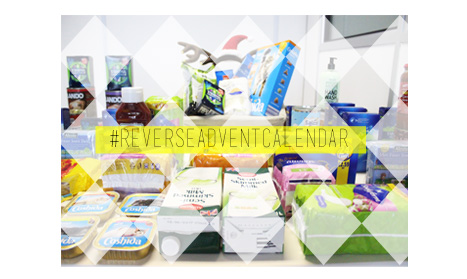Since the Panda update of 2011, there are two words that still send shudders through many site owners, marketers and stop conversations in their tracks: duplicate content.

Now, I’m going to assume that as you’re reading this in 2018, you’re not copy/pasting content from other sites on to yours (also known as plagiarism) or creating multiple sites that are mirrors of yours in a hope to occupy more search ranking positions. Both of these “tactics” are clearly lazy, duplicitous and do not help a searcher.
So, let’s dig in a bit beyond the obvious, down to some of the meatier challenges that still look like duplicate content and see what you can do about them.
What Google Says About Duplicate Content in 2018
First, a word or two from the Big G, because this is really important. Duplicate content, in the sense of content that is rightfully very similar for any number of reasons, is not an immediate threat to your site.
Google defines duplicate content as:
“substantive blocks of content within or across domains that either completely match other content or are appreciably similar”
And acknowledges that:
“mostly, this is not deceptive in origin”
However, Google will remove from the index or rank lower:
“content [that] is deliberately duplicated across domains in an attempt to manipulate search engine rankings or win more traffic.”
To summarise from all over Google’s messages over time:
- There is no penalty just for having duplicate content. Duplicate content is assumed innocent until proven guilty.
- The aim is for Google to understand which page is the best one to return for a search query and show one page from one domain.
In other words: common sense actually seems to abide. Make sure each page has useful content, giving people the information they need for a relevant search query, and everybody’s happy.
Of course, as an eCommerce marketing agency, people come to us because not everybody is happy; they want the edge or to avoid others’ pitfalls – and eCommerce can provide just the kind of content that sparks the duplicate content alarm.

Syndicated Content
So, you’ve written an awesome blog or informational page for your online hat shop, telling people how to choose the right hat for their head. You’ve tweeted it out, posted it across your Facebook, make a cute picture for it in on Instagram, but you want to go further.
While content syndication isn’t the automated service it was 10 years ago, it still exists in the form of platforms you can share content on, bloggers you could work with and media.
If you want to re-use your hat guide elsewhere in full or in part, or a blogger or journalist asks to share it, go for it. Go ahead and duplicate that content in safety, just so long as the content is always attributed via a link back to the source.
Huffington Post is a prime example of this, with a plethora of articles all cribbed and edited from elsewhere with a link back to the source.
Is there a risk? Yes, but not of a blanket penalty. The risk is simply that Google only wants to show one domain per identical piece of content for a search query and will decide which version of the content it thinks is most appropriate. There’s a chance that if your hat guide hits HuffPo, HuffPo might get your rankings for the hat terms you were targeting.
Again, though, people – common sense. Don’t post your wonderful hat guide on every platform out there as a quick linkbuilding strategy. The point of sharing the guide is to put it in places where it is relevant and helpful to the audience.
TL;DR:
Re-use your content sensibly to help new audiences and always attribute the original post.

Product Page Variants
A big challenge for eCommerce clients is having a large number of very similar products all on their own URLs. This could be a matter of colour variants, where each page is the same product but in different colours – how much unique copy can you write for a 10m white ethernet cable compared to a 10m blue ethernet cable? And what if you even have separate pages for the different lengths? That’s going to get duplicative, fast!
When you’re looking at making great product pages, do consider if you can collect product variants onto one URL, with all sizes and colours available from onsite options (like you’d expect from a fashion shop). The coding work could be well worth the hassle for an easier onsite experience for users as well as for search.
If you do need to have multiple URLs for product variants and the content is therefore duplicated, pick a version to be your “base” variant – this should be your highest-ranking version based on broad searches or, if none rank, choose your top selling version. Next, use rel="canonical" tags from the alternative style pages back to that one. Do still optimise each page for the colour variant so the meta data and onsite content are still ready for longtail search.
If you’re going the second route, you are very likely going to have duplicative content with minimal differences, but you are giving Google all the indicators to show why you’re doing it and how it should process the information when someone searches “ethernet cable” or “blue ethernet cable”.
TL;DR:
- Try to consolidate product variants into a single product page where users can choose colours, sizes etc. on the same URL
- Otherwise, pick a “base” variant and use rel=canonical tags from the alternative style pages back to that one

Product Page Boiler Plate
It’s easy to get repeated content on product pages even when the products are quite different.
For example, you may make ten models of blender. Each is different in look, price and additional functionality, and each has its own URL. However, all use your patented mechanism that never gets jammed up and are backed by your industry leading 60-day trial period – and that’s the content you want on every page as it hammers home why your blenders are the best.
As such, each page uses the same images and big chunks of text to explain your products’ shared benefits to a potential customer.
From a search perspective, go for it. Google is savvy enough to know how eCommerce sites work and this won’t penalise your products.
However, what you may want to consider is:
- Is your content potentially getting in the way of conversions by dominating the layout, masking key buttons or overshadowing other on-page product information or benefits like free shipping or multibuy offers?
- If this information is so important to you, could it be used as its own landing page e.g., “Why choose an ACME Blender?”
- Might it benefit users from being positioned higher up the funnel?
- Are you able to say everything you want while making the product page feel specific to the product?
You might find it makes more sense to create additional informational pages that give the meaty detail while your product page provides the sizzle e.g., “and the Ninja Slicer includes our patented non-jam motor and is supported by our 60-day trial”. This way, you can bring your USPs together into a clear section, ideally a bulleted list, that really has impact, while people who want the deep detail have a page they can read.
Keeping the content trim on the product page gives you more space to talk about the unique properties of the model and may improve conversion if your content has been pushing your conversion buttons down the screen.
If it hurts too much to move that chunky content away, spend time looking at the product page to make sure you’re really communicating all your key points – you might find it works well to keep the bulleted lists of benefits towards the top of the page with your Buy buttons, but then the in-depth content can sit below the fold. Either way, you still won’t have to worry about duplicate content penalties.
TL;DR:
- When you have information to repeat about each product, consider if it belongs on the product page or if can have its own page that is then linked to from a point that lands the main detail.
- You could also look at the placement of your information content on the product page to ensure all your USPs have space to shine.

Location Doorway Pages
For local companies, oldschool SEO practice was to create a different page on your site for each location e.g.,
- pizza.com/pizzas-in-brighton
- pizza.com/pizzas-in-hove
- pizza.com/pizzas-in-kemp-town
- pizza.com/pizzas-in-brighton-marina
These pages would essentially be identical, just with the locations swapped out and would be entirely for the purpose of gaming SEO. Now this is just the kind of duplicative content that Google is penalising and we have written before about why you shouldn’t use doorway pages.
So, how do you get that sweet local relevance?
Firstly, make sure your Google My Business is up to scratch and fully reflects your service areas. Include your key service areas in your descriptions and make sure to highlight any differences in local offerings, such as call-out charges or services not available.
On your site, if do you want to have location pages, make sure that each page is unique to that location. If your service does change, spell out the changes. If there’s local insight to share, add it here.
For example, a plumber could talk about the age of properties in different areas and how that affects common issues they see, including lead pipes, pipes of different widths compared to standard, etc. The key is to treat each page as a unique opportunity to demonstrate locally relevant expertise, not just spam up your site. These pages should be seen as integral to your site and linked to throughout so that they are accessible to all users.
If you can’t do this, work your locations intelligently into your content, including H1s and H2s, to help Google and your customers best understand the areas that you do and don’t serve. After all, a Brighton plumber doesn’t want calls from Edinburgh!
TL;DR:
- Create a small amount of key location pages with highly unique, relevant content about your service in that area. Link to them from your other main pages.
- Consider if a simple ‘key areas served’ definition would be relevant on each page in the content, the footer or through a single Areas we serve page
Follow my contributions to the blog to find out more about marketing in a digital world, or sign up to the ThoughtShift Guest List, our monthly email, to keep up-to-date on all our latest guides, advice and blog posts.






